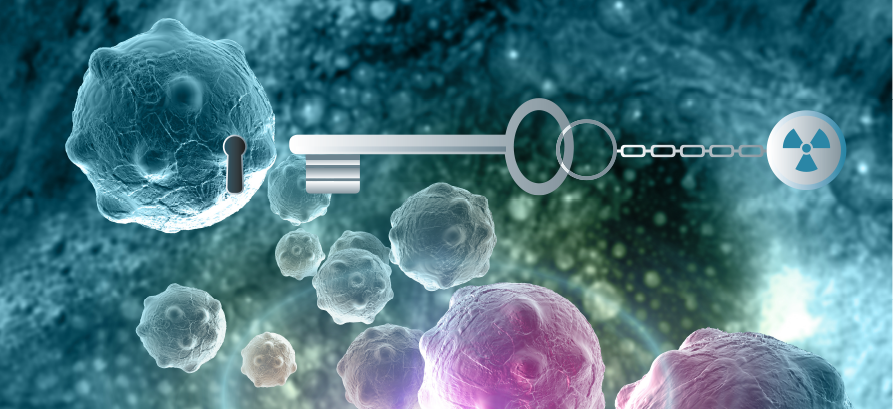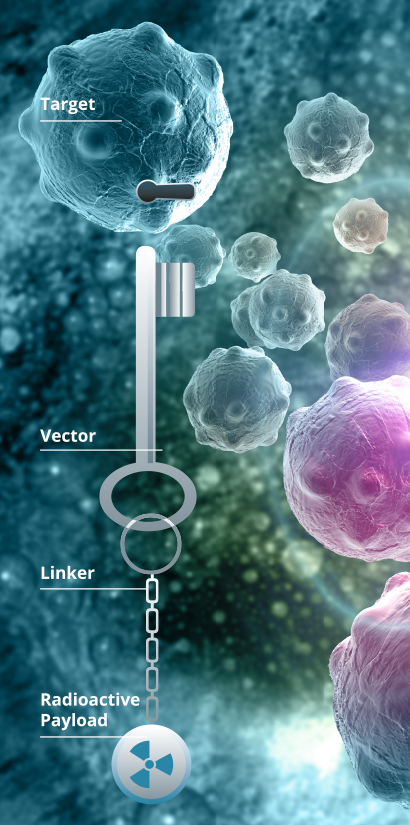Investor partnering / About nuclear medicine
Depending on the type of radiation and the energy, radiopharmaceuticals can be used as a diagnostic agent (DX) or as a therapeutic agent (TX). When used as a diagnostic tool, PET (positron emission tomography) or SPECT (single photon emission computed tomography) detect the radioactivity bound to the target tissue and provide visual information about the disease burden. When used as a therapeutic agent, the radiation and energy of the radionuclide (alpha or beta emitters) is used to induce DNA double strand breaks followed by cell death. Whereas the vector is often the same for the diagnostic and therapeutic agent the radionuclide differs in type of radiation and energy. This combination of diagnostic and therapeutic enables the THERANOSTIC approach of FIND, FIGHT and FOLLOW for a specific disease which offers effective personalised patient treatment.
Investor partnering / What 1717 LSV offers
Deal by deal investment opportunities in radiopharmaceutical ventures
The market
- The MNM market is expected to rise over proportionally from $ 4.5 BN in 2016 to $ 26.0 BN in 2030.
- A series of acquisitions and IPOs have already boosted the interest of investors and strategists.
- Primary focus fields are high medical need/ high reimbursement areas such as oncology.
- Development costs and times are lower compared to conventional pharmaceuticals.
What does 1717 LSV offer
- Access to pre-selected, early stage radiopharmaceutical investment opportunities.
- Support of ventures on an operational level and thereby reducing cost, time ans risks in the development process.
- Global network of experienced clinicians, scientists, pharma executives and regulatory experts.
- Access to the Theranostic Research Centre (TRC) which as a research plattform offers a unique infrastructure for (pre)clinical trials.
Terms
- No fees or obligation to invest in any potential project.
- Deal by deal.
- Investment scope: Pharmaceuticals, radiopharmaceuticals, early stage venture companies.
- Geographical focus: Global projects which seek European and / or North American market approval.
- Funding per project between € 0.5 M and € 5 M with an investment horizon of up to 5 years.
Investor partnering / What 1717 LSV offers
1717 LSV pre-selects investment opportunities for its investors network
Investor partnering / What 1717 LSV offers
7 reasons to invest in 1717 LSV identified projects

Radiopharmaceuticals: Lower development costs compared to conventional drugs.

Nuclear medicine: Over proportional growth, increasing interest of investors and strategists.

Unique access to early clinical trial facilities: Acceleration of product development.

The feasibility assessment of potential projects by an experienced expert team.

Investors select their own investment decisions.

Former team of one of Germany´s VC success stories: OctreoPharm Sciences GmbH.

Translation of scientific results into public benefits for patients in need.



